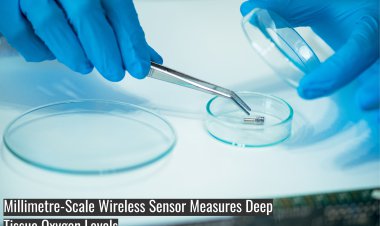Soft Sensors for Wireless Monitoring During Labor

Researchers at Northwestern University have developed a series of soft sensors that can provide wireless monitoring of pregnant mothers during labor. The sensors are a replacement for the wires and belts typically used for monitoring during labor, and can send data directly to a clinician’s smartphone, opening the possibility of remote monitoring in rural or low-resource settings, or even for home births during the current pandemic.
At present, clinicians monitor pregnant women during labor using a series of cumbersome belts and wires. These measurements include vital signs and data on the frequency of contractions, and are important to ensure that the mother and baby are safe. However, the devices can slip out of place and tether moms to their hospital beds, making it difficult to get up or move around.
“Pregnancy monitoring really hasn’t changed for decades. Compared to some of the technology advances we see in cardiology or imaging, women’s health has lagged behind,” said Dr. Shuai Xu, a researcher involved in the study via a Northwestern press release.
These new devices are wireless, and much less cumbersome. They include a soft and flexible monitor that adheres to the abdomen, which monitors the contractions and the baby’s heartbeat. A second monitor, another small device, wraps around a finger to measure oxygen levels and peripheral temperature, while a third postage stamp-sized patch adheres to the chest and monitors the maternal heart and core temperature.
“Eliminating the wires not only increases the comfort and freedom of movement for the mother, but it also leads to more reliable data,” said John Rogers, another researcher involved in the study. “The wires and the forces they impose on skin-adherent sensors can be a significant source of electrical noise. We can remove that noise to yield improved data on the health of the mother and baby.”
The research team has already deployed the monitors to low-resource areas in several countries, including Ghana and India. The devices can transmit their data to a smartphone, meaning that they are well suited for remote monitoring. “The beauty of the technology is that it can operate with a wide range of mobile devices without sacrificing accuracy,” Xu said. “You don’t need expensive equipment that requires a specialized engineer to install.”


 Admin
Admin 
























